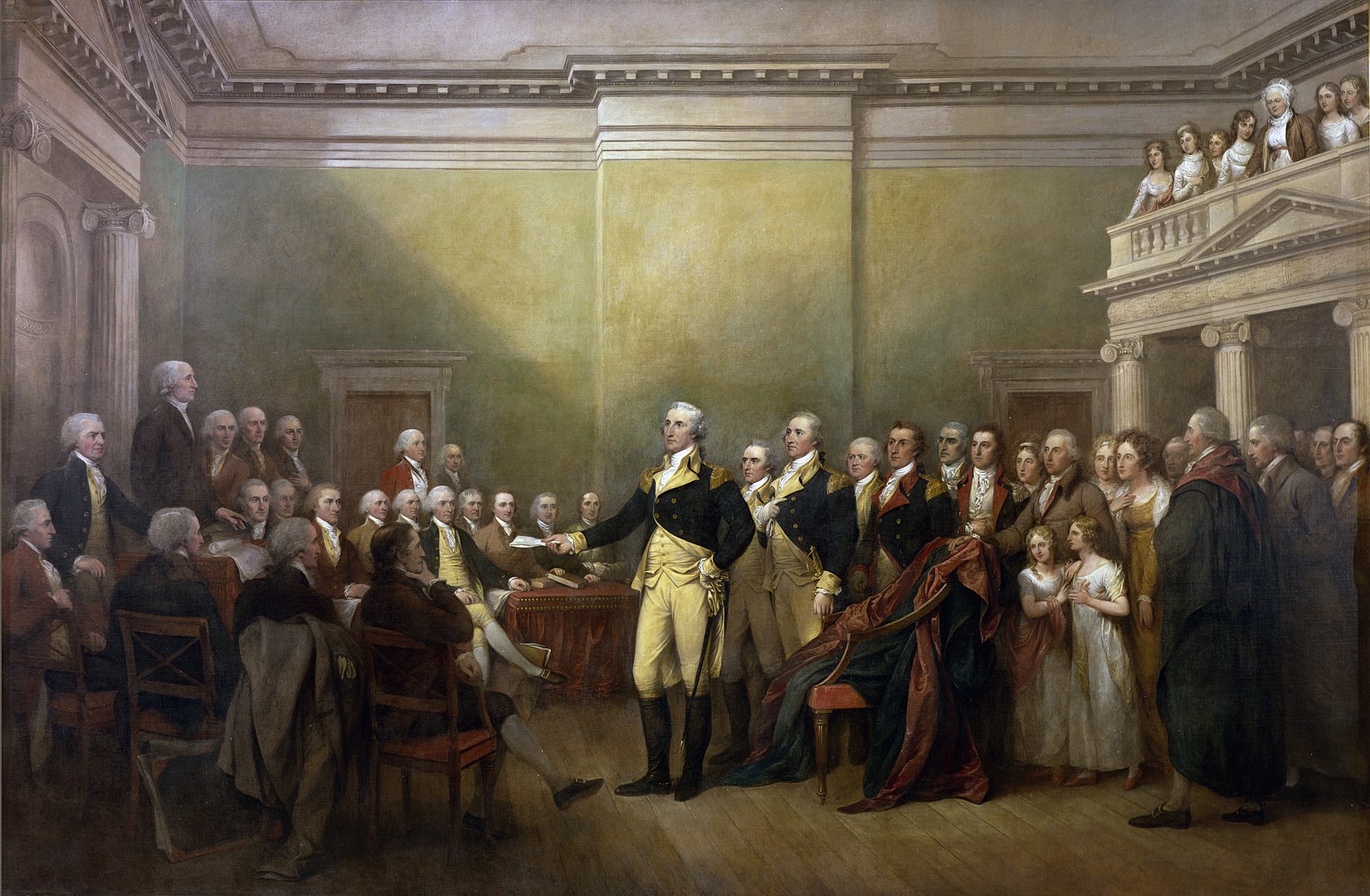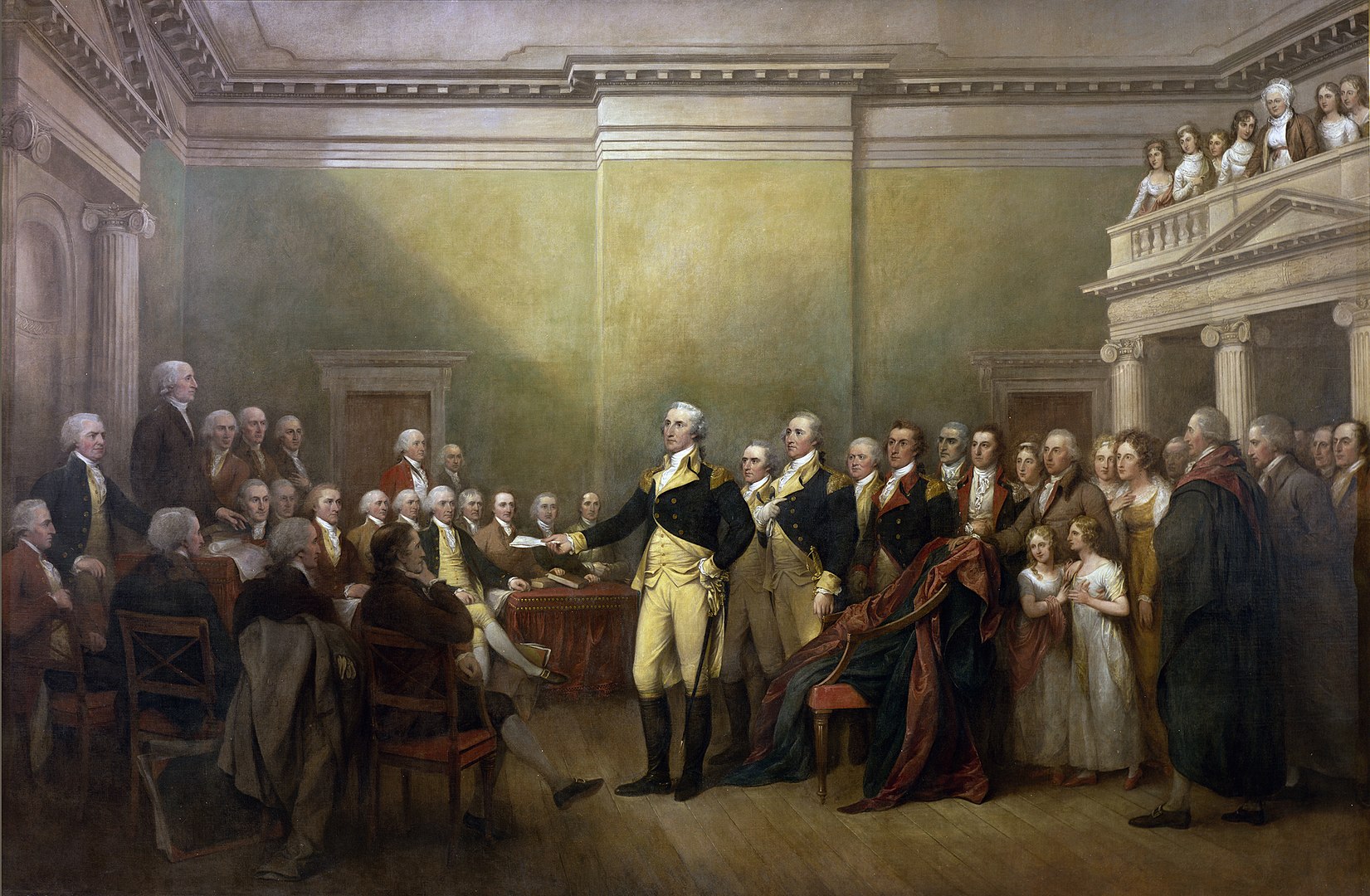[ad_1]

John Trumbull, General George Washington Resigning His Commission, 1824.
VIA WIKIMEDIA COMMONS
U.S. Presidents and art history have a strange relationship. One example: When he was President, George H. W. Bush famously denounced a Dread Scott artwork involving an American flag, saying, “I don’t approve of it at all.” But there are more positive art-historical moments involving former Commander-in-Chiefs as well—Barack Obama, for one, added works by artists such as Alma Thomas and Glenn Ligon to the White House collection.
Regardless of political views, it’s always interesting to see how aspiring Presidential candidates deal with art history, and last night we got our first clue, at the first of two debates among the Democratic candidates. This glimpse came courtesy of Beto O’Rourke, a former Representative from Texas, who, when asked about how he would go about impeaching Donald Trump, launched into an aside about a painting by John Trumbull that currently hangs in the U.S. Capitol Rotunda in Washington, D.C. (By the way, let’s not forget O’Rourke was briefly an art handler in his youth.)
“One of the most powerful pieces of art in the U.S. Capitol is the Trumbull painting of General George Washington resigning his commission to the Continental Congress at the height of his power, submitting to the rule of law and the will of the people,” O’Rourke said. “That has withstood the test of time for the last 243 years.”
Was O’Rourke comparing Trump to Washington, one of America’s founding fathers? Some were left confused by this point. The blog Splinter, for example, published an article on Thursday morning saying that O’Rourke probably should have just skipped to the impeachment part of his answer, adding, “Nobody cares about the painting!”
But some of us do still care about the painting, so here is some backstory. Trumbull completed General George Washington Resigning His Commission in 1824, making it about 195 years old. (O’Rourke appears to have been referencing the year 1776 in his response, which is neither the year in which the painting was made nor the date of the historical event depicted.) The 18-foot-long painting is one of four that Trumbull, one of the era’s most celebrated American artists, created for the U.S. Capitol Rotunda, at the behest of James Madison, who was then the President.

Beto O’Rourke.
LARRY MARANO/SHUTTERSTOCK
Trumbull’s painting depicts an event from 1783, when Washington resigned his commission as commander-in-chief of the Continental Army in Annapolis, Maryland. Many historians have regarded the event as an important one—it was an example of the state abdicating authority and allowing the people to take power. According to the U.S. Capitol Rotunda’s website, the painting represents “a fundamental principle of American democracy.”
By 1824, Trumbull had become one of his day’s most sought-after artists, thanks, in part, to his knowledge of artistic trends in Europe. Trumbull was able to study in London for a bit under the famed painter Benjamin West, who was the leading exponent of Neoclassicism in his country. From West, Trumbull was able to gain an understanding of Neoclassical compositions, which emphasize displays of power, often in the service of portraying historical events and connecting them to the greatness of ancient Greece. (Two years after arriving in England, Trumbull was deported for his anti-British sentiment.)
Like many acolytes of Neoclassicism, Trumbull was interested in portraying history, which was then considered the highest and most esteemed genre of painting, though he also specialized in portraiture and was a favorite among high-ranking politicians. At a time when American art history was still nascent, he wanted to create images for his country that would communicate prowess. The four paintings for the Rotunda were just one part of his project, and indeed they have become iconic images for the country, with his portrait of Alexander Hamilton being used for the $10 bill and his painting of the signing of the Declaration of Independence winding up on the now-out-of-print $2 one.
Because Trumbull had been an aide-de-camp for Washington during the Revolutionary War, General George Washington Resigning His Commission was, in some ways, a personal effort. Trumbull made the painting by working from miniatures and similar compositions, so he took some artistic liberties—the empty chair with robes at the center, a symbol of Washington’s resignation of power, was based on an object that may not have been in the room in 1783.
The painting was widely praised, and it toured America after its completion, stopping in Boston, Providence, Hartford, Albany, Philadelphia, and New York. Through the tour, Trumbull made a profit of what would be equal today to around $55,000.
Anyway, enough about the painting. Here was O’Rourke’s roundabout answer for the impeachment query: “We must begin impeachment now so that we have the facts and the truth and we follow them as far as they go and as high up as they reach and we save this democracy.”
[ad_2]
Source link

